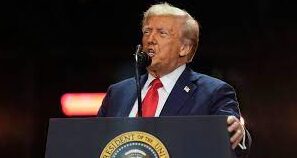China is battling its biggest-ever outbreak of chikungunya fever, a mosquito-borne virus, with strict measures reminiscent of its zero-COVID strategy.
Since July, Guangdong province has reported more than 10,000 cases, the largest outbreak ever documented in China. The manufacturing city of Foshan was the worst hit, recording more than 600 new infections a day at its peak. That is more than all cases reported across mainland China between 2010 and 2019 combined.
To stop the spread, authorities launched aggressive containment efforts. Workers sprayed insecticide in affected neighborhoods several times a day, while suspected patients were told to report cases quickly and enter quarantine.
Health experts say this surge was driven by unusually warm weather and a fast-moving virus strain. But the problem extends far beyond China. A 2025 study linked global warming to the wider spread of mosquito-borne illnesses like dengue, malaria and chikungunya.
By mid-August, around 270,000 chikungunya cases had been recorded worldwide this year, leading to at least 110 deaths, according to the Pan American Health Organisation.
The U.S. Centers for Disease Control and Prevention has not seen a local case since 2019 but issued a travel health notice in August. It urged “enhanced precaution” for visitors to Guangdong and four other countries, warning that anyone spending time in affected areas is at risk.
What is chikungunya?
The virus was first identified in Tanzania in 1952 and has spread across the Americas, Africa and Asia. It is transmitted by infected mosquitoes, not person-to-person. Its name comes from a Tanzanian language and means “to bend over,” describing the severe joint pain it causes.
The disease is rarely fatal but can leave people with lasting symptoms like muscle pain, headaches, nausea and fatigue. There is no specific cure. Treatment focuses on easing symptoms. The U.S. has one approved vaccine. The CDC advises travelers to use insect repellent, wear long sleeves and get vaccinated if necessary before visiting outbreak areas.
Chikungunya has been reported in more than 110 countries, putting 5.6 billion people at risk, according to the World Health Organization.
China’s crackdown
Large chikungunya outbreaks are unusual in China, where the first imported case appeared in 2008. This year, local authorities moved fast. Workers cleared stagnant water, sprayed insecticide on streets and set up mosquito-proof beds in clinics. Residents were told to install window screens and burn mosquito coils at home.
By law, people and organizations must comply with public health orders, with penalties for refusal. Some residents compared the campaign to heavy-handed Covid controls, while others welcomed cleaner streets.
The measures appear to have worked. By late August, Foshan had kept daily cases under 50 for nine straight days, allowing officials to lift the city’s public health emergency.
Bigger threats ahead
Experts warn that climate change will keep driving mosquito-borne diseases to new regions. In recent years, Europe has seen local chikungunya outbreaks for the first time in a decade.
“Humans are not alone on this globe,” said Jasper Chan, a microbiology professor at the University of Hong Kong. “We live with animals, birds and mosquitoes. We’re just one part of the ecosystem.”






